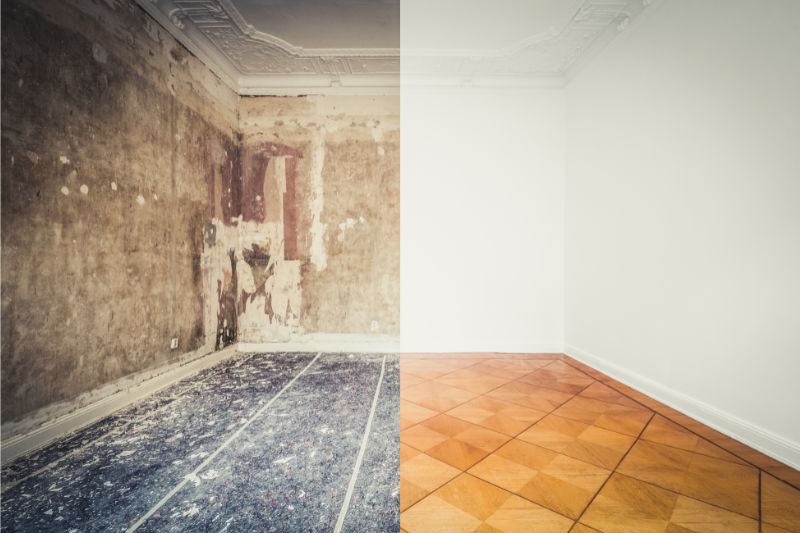Understanding the Difference between Renovation and Restoration
Before delving into the world of renovation and restoration, it is crucial to understand the difference between the two. While the terms are often used interchangeably, they have distinct meanings. Renovation refers to the process of improving or updating a structure, making it more functional or aesthetically pleasing. This may involve replacing fixtures, upgrading utilities, or modernizing the layout. Restoration, on the other hand, aims to return a building to its original state, preserving its historical integrity. It involves repairing and recreating the original features and materials, often using traditional techniques. Both renovation and restoration have their place, depending on the goals and condition of the structure.
Renovation and restoration can breathe new life into old structures, allowing us to appreciate their beauty and historical significance. By preserving these buildings, we honour the past and create a link between generations. Renovating and restoring old structures not only enhances the visual appeal of a neighbourhood but also contributes to its cultural identity. It allows us to experience history firsthand and fosters a sense of pride within the community. Moreover, it can attract tourism and stimulate economic growth. By investing in renovation and restoration, we invest in our collective heritage.
Benefits of Renovating and Restoring Old Structures
The benefits of renovating and restoring old structures go beyond preserving history. These projects offer numerous advantages, both on a personal and societal level. First and foremost, renovating or restoring a historic building can significantly increase its value. Potential buyers are often drawn to the charm and uniqueness of such properties, willing to pay a premium for a piece of history. Additionally, renovation and restoration projects create jobs for skilled professionals in various fields, contributing to the local economy. They also have a positive environmental impact by repurposing existing structures, reducing the need for new construction and the associated carbon footprint.
From a personal standpoint, renovating or restoring an old structure can be a rewarding and fulfilling experience. It allows you to put your stamp on a piece of history, breathing new life into a building that may have otherwise been neglected or forgotten. There is a sense of accomplishment in preserving the past and making it relevant to the present. Moreover, living or working in a renovated or restored building can offer a unique and inspiring environment, filled with character and stories from the past. It is an opportunity to connect with history in a tangible way and create a lasting legacy for future generations.
Historical Significance of Renovation and Restoration
Renovation and restoration have a profound historical significance. Through these processes, we can learn about the architectural styles, building techniques, and cultural influences of the past. By preserving and restoring historical landmarks, we ensure that future generations have the opportunity to appreciate and study these significant structures. These buildings often hold stories of the people who lived or worked within their walls, providing a glimpse into the past. Whether it is a grand castle or a humble cottage, each structure has its own unique tale to tell.
Furthermore, renovation and restoration play a vital role in maintaining a sense of continuity and identity within a community. Historical landmarks serve as a visual reminder of our heritage, acting as a bridge between the past, present, and future. They evoke a sense of pride and belonging, fostering a connection between residents and their surroundings. By preserving these structures, we preserve our collective memory and ensure that the stories they hold are not lost to time.
Planning a Renovation or Restoration Project
Proper planning is essential when undertaking a renovation or restoration project. Before diving into the actual work, it is crucial to thoroughly assess the building’s condition and determine the scope of the project. This involves conducting a detailed inspection, identifying any structural issues, and understanding the historical significance of the building. It is also important to establish a realistic budget and timeline, taking into account potential setbacks and unforeseen expenses.
Once the initial groundwork is complete, it is time to develop a comprehensive plan. This includes outlining the specific goals of the project, deciding on the level of restoration or renovation required, and researching the necessary permits and regulations. It is advisable to consult with experts, such as architects, historians, and preservationists, to ensure that the project aligns with best practices and meets the necessary standards. Collaborating with professionals who have experience in renovation and restoration can greatly enhance the success of the project.
Renovation and Restoration Techniques and Best Practices
Renovating and restoring old structures requires a careful balance between preserving historical integrity and incorporating modern functionality. It is essential to employ techniques and best practices that respect the building’s original design and materials. This often involves using traditional construction methods and materials, such as lime mortar, wooden joinery, and original paint finishes. When necessary, modern solutions can be cleverly integrated without compromising the building’s authenticity.
One key aspect of successful renovation and restoration is paying attention to detail. This includes meticulously recreating original features, such as mouldings, flooring, and windows, to match the building’s era. It also involves using period-appropriate colours and finishes to ensure a seamless transition between old and new. Additionally, it is crucial to approach the project with a long-term perspective, considering the ongoing maintenance and preservation needs of the building. By implementing these techniques and best practices, we can revive the past with a level of authenticity that stands the test of time.
Case Studies of Successful Renovation and Restoration Projects
To truly appreciate the transformative power of renovation and restoration, let us explore a few case studies of successful projects. One notable example is the renovation of the Royal Opera House in London. Originally built in 1732, the opera house underwent a meticulous restoration in the late 1990s, reviving its original grandeur. The project involved recreating the original decorative features, such as the stunning ceiling paintings and intricate plasterwork. Today, the Royal Opera House stands as a testament to the power of restoration in preserving architectural heritage.
Another remarkable case study is the renovation of the Flatiron Building in New York City. This iconic structure, completed in 1902, underwent a comprehensive renovation in the early 21st century. The project involved restoring the building’s distinctive terra cotta facade, as well as upgrading its interior spaces to meet modern standards. The renovation successfully breathed new life into the Flatiron Building, allowing it to continue its role as a beloved architectural landmark in the heart of Manhattan.
Hiring Professionals for Renovation and Restoration
Renovation and restoration projects require a diverse set of skills and expertise. It is essential to hire professionals who specialize in historical preservation, architecture, and construction to ensure the success of the project. Architects can provide valuable insights into the building’s structural integrity and historical significance. Preservationists can guide the restoration process, ensuring that the project adheres to best practices. Skilled craftsmen and contractors can execute the work with precision and attention to detail. By assembling a team of professionals, you can trust that your renovation or restoration project is in capable hands.
When selecting professionals for your project, it is important to research their qualifications, experience, and portfolio of past work. Look for individuals or firms with a proven track record in historical preservation and restoration. Additionally, consider seeking recommendations from other property owners who have undertaken similar projects. By investing in the right professionals, you are investing in the long-term preservation and success of your renovation or restoration project.
Budgeting for a Renovation or Restoration Project
Budgeting for a renovation or restoration project requires careful consideration of various factors. It is important to establish a realistic budget from the outset, taking into account the scope of the project, the condition of the building, and the desired level of restoration or renovation. Unexpected issues may arise during the course of the project, so it is advisable to set aside a contingency fund to cover any unforeseen expenses.
To ensure an accurate budget, it is crucial to obtain detailed cost estimates from professionals involved in the project. Architects, preservationists, and contractors can provide insights into the materials, labour, and timeline required for the renovation or restoration. Consulting with multiple experts can help you compare quotes and make informed decisions about where to allocate your budget. Additionally, it may be possible to secure grants, tax incentives, or other funding sources for historical preservation projects. By exploring all available options, you can maximize the impact of your budget and bring your renovation or restoration project to fruition.
Conclusion: Preserving the Past through Renovation and Restoration
Renovation and restoration are not just about improving the look and functionality of old structures; they are about preserving our collective history and cultural heritage. By investing in the art of renovation and restoration, we breathe new life into the past, ensuring that future generations can appreciate the beauty and significance of historical landmarks. Through meticulous planning, employing best practices, and hiring skilled professionals, we can revive the past with authenticity and honour. So, whether you are considering renovating your own historic property or simply admiring the efforts of others, take a moment to reflect on the importance of preserving the past through renovation and restoration. The legacy of our built heritage depends on it.





